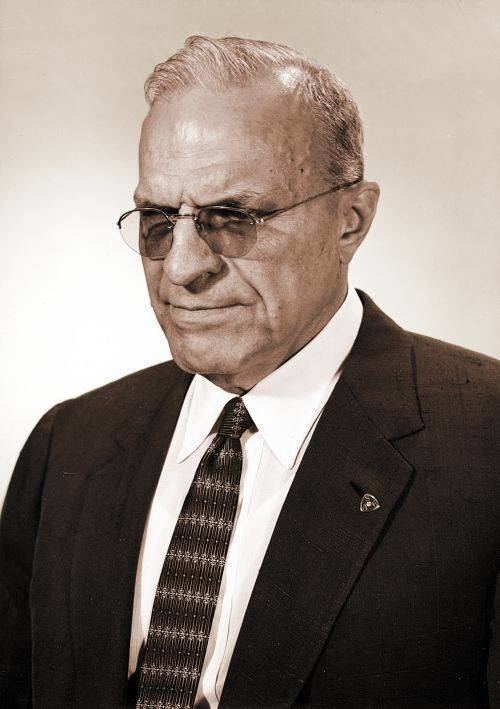Nationality American Role Inventor Name Ralph Teetor | Known for Cruise control Occupation Engineer, Inventor | |
 | ||
Education | ||
Control your cruising the ralph teetor story stuff of genius
Ralph Teetor (August 17, 1890 – February 15, 1982) was a prolific (and blind) inventor who invented cruise control. He was the longtime president of the automotive parts manufacturer The Perfect Circle Co. (acquired in 1963 by Dana Holding Corporation, then sold to Mahle GmbH in 2007) in Hagerstown, Indiana, a manufacturer of piston rings.
Contents
- Control your cruising the ralph teetor story stuff of genius
- The Inventor of Cruise Control Couldnt See
- Early life
- Cruise control
- Other achievements
- References
The Inventor of Cruise Control Couldn’t See
Early life
Teetor became blind at age five in an accident, but as a grown man he preferred never to discuss his disability. He graduated from the University of Pennsylvania with a degree in mechanical engineering in 1912.
Teetor's highly developed sense of touch proved helpful in developing a technique for balancing steam turbine rotors used in torpedo-boat destroyers. Dynamic balancing of large components had puzzled others before Teetor solved the problem.
Cruise control
Teetor was inspired to invent cruise control one day while riding with his lawyer. The lawyer would slow down while talking and speed up while listening. This rocking motion so annoyed Teetor that he was determined to invent a speed control device. In 1945, after ten years of tinkering, Ralph Teetor received his first patent on a speed control device. Early names for his invention included "Controlmatic", "Touchomatic", "Pressomatic" and "Speedostat", with "Speedostat" becoming the trademark name. The common name became "Cruise Control". The Perfect Circle device wasn't used commercially until Chrysler introduced it in 1958.
The throttle was controlled by a bi-directional screw drive electric motor, the two connected during use by an electro magnet. A 12v post would stay nearly centered between two throttle mounted electric contacts, one for turning the motor's screw for more throttle, the other for less. The floating post would "guide" the motor (and throttle and vehicle speed) with input from 1) sprung leveraged spinning weights driven from the transmission's speedometer cable, and 2) a counter-spring tension set by a cable from a dial near the steering wheel. This first-mass-marketed design was the industry standard for just over a decade (GM changed to vacuum-actuator/turn-signal-engage-button in 1969, though still a "Speedostat" product).
Other achievements
Teetor managed to live his life almost as if his accident had never happened, and went on to become successful as an engineer, manufacturing executive and entrepreneur. His other inventions included an early powered lawn mower, lock mechanisms, and holders for fishing rods.
In 1936, Teetor was elected as president of the Society of Automotive Engineers (SAE). In 1963, he endowed the SAE's Ralph R. Teetor Educational Award which is awarded annually to stimulate "contacts between younger engineering educators and practicing engineers in industry and government."
In 1965, Teetor received two honorary degrees, Doctor of Engineering at the Indiana Institute of Technology and Doctor of Laws at Earlham College, Indiana. He was also made a Fellow of the American Society of Mechanical Engineers. The planetarium and one of the residence houses at Earlham College are named in Teetor's honor.
In 1988, Teetor was posthumously inducted into the Automotive Hall of Fame in Dearborn, Michigan, for his numerous contributions to the automotive industry.
